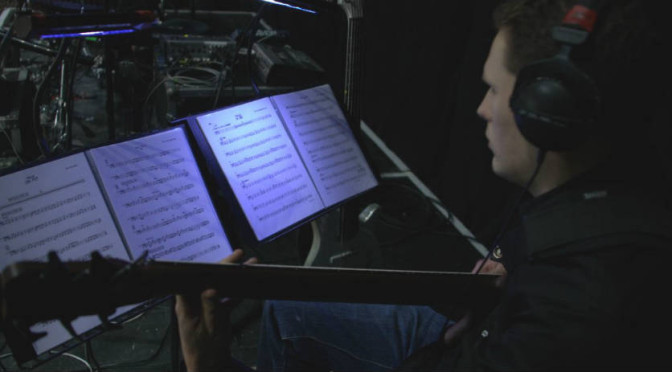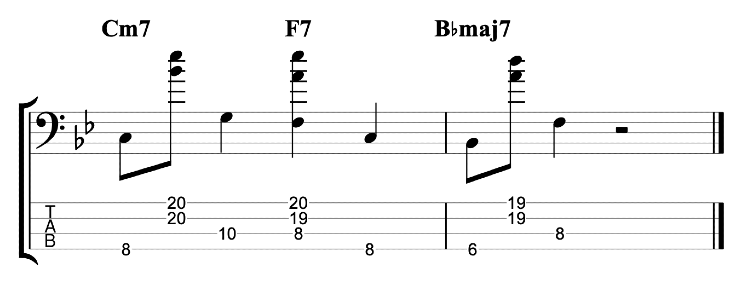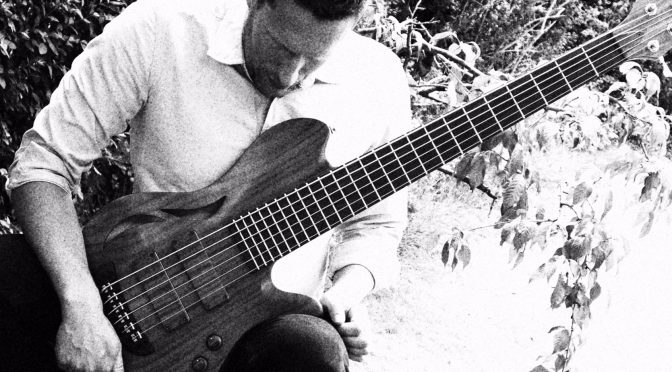Tapping Jazz Lines – Can You Play Jazz Solos With Two-Hand Tapping? – Bass Practice Diary – 8th December 2020
I’ve witnessed a couple of musicians in the UK playing improvised jazz solos with a two-hand tapping technique. However, I’ve never heard anyone talk about this idea. It seems to me that there is an obvious advantage to using two-hand tapping to play jazz lines. The advantage is that you can easily make big interval jumps in your lines. That is quite hard to do with a conventional playing technique. For a long time, I’ve wanted to explore the idea myself. So, when one of my advanced bass students brought up the subject of tapping in a lesson, I jumped at the opportunity to work through some ideas with him.
How I arranged the lines
We started by coming up with a jazz line on a II-V-I in Bb. This is a very typical exercise for learning to play jazz. The line we came up with was this.

We then tried to rearrange the line by moving some of the notes up one octave to be tapped with the right-hand. The remaining notes would be hammered-on by the left hand. This is the finished line.

We went through the same process again and came up with another line, which goes like this.

If you’d like to learn more about my two-hand tapping techniques, then check out my previous videos on the subject. This video looks at the basic two-hand tapping technique of hammering and pulling notes with both hands. This video looks at arranging chords and chord progressions with two-hand tapping.
This idea of using two-hand tapping to make jazz lines is still very new for me. I hope I will revisit this subject in the future when I’ve had more time to work on it. At the moment, I’m still at the very early stage of working out lines and practicing them. I hope that as time goes by, I will develop the ability to improvise lines in this way.








